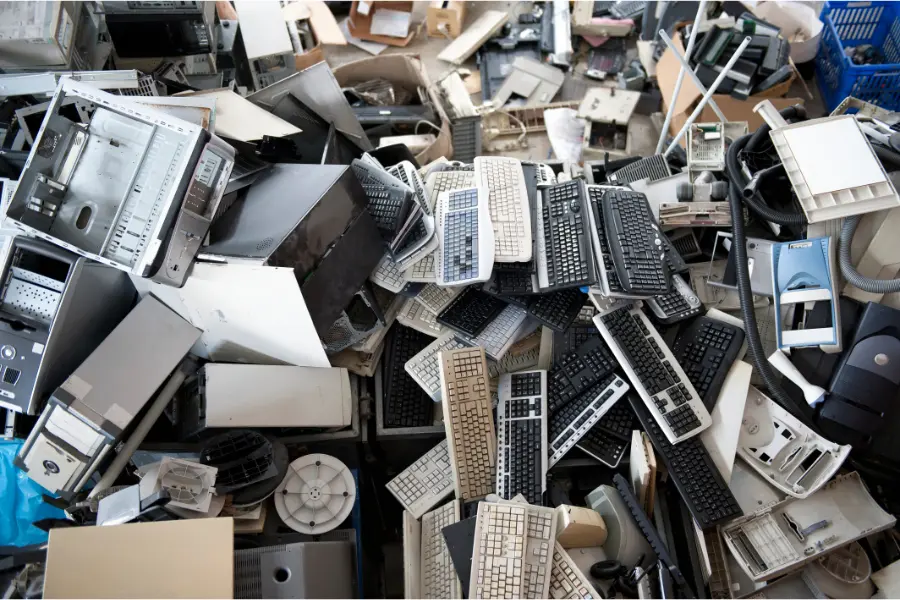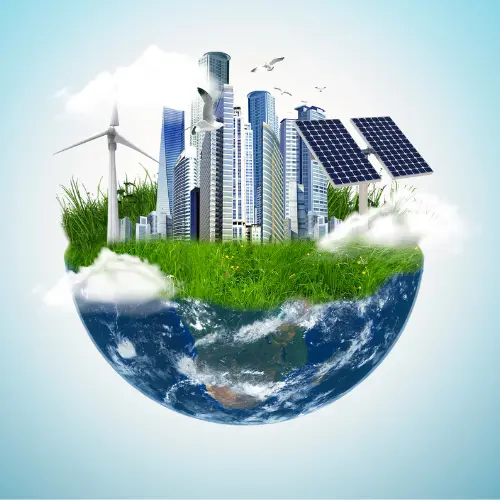Ours is a digital world, and it is becoming increasingly so in virtually (no pun intended) every imaginable way. While devices like smartphones, tablets, computers, and state-of-the-art TVs allow us to connect with each other and the world around us to levels that no one could have imagined outside of a StarTrek™ episode, the price we must pay for such amenities is becoming increasingly clear as stockpiles of electronic waste continue to grow.
The list of reasons why we should recycle electronics is a lengthy one, but these three are compelling enough to spur immediate and decisive action:
- Electronic waste poses serious risks to our health
- Electronic waste threatens our environment
- Electronic waste contains valuable resources
It is an absolute certainty that our dependence on electronic gadgetry will not be decreasing any time soon. It is also a fact that the flow of electronic goods into the global marketplace is far outpacing the rate that older devices are responsibly taken out of circulation. There are no easy answers to this dilemma, but the right course of action begins with awareness, and this article is a good first step.
Here’s Why We Should Recycle Electronics
The global proliferation of electronics is undeniable. There are yearly releases of new smartphones with must-have features that cause perfectly suitable devices to become antiquated in less than 12 months’ time. The same can be said for:
- Computers
- TVs
- Gaming consoles
- A host of other gadgets
This constant and ever-increasing inflow of electronics is creating stockpiles of e-waste around the globe.
According to one study, over 48 million tons of electronic waste were created in 2018 and what is more alarming is that e-waste is now the fastest-growing stream of waste in the world, and this does not figure to change without corrective action.
Here are three key reasons why we should recycle electronics, starting with our own well-being.
Electronic Waste Poses Serious Health Risks
Today’s electronics are technological marvels, jam-packed with the 21st century’s latest scientific advancements. Part of what makes modern gadgets go are the materials that they contain, which allow internal processes to occur faster and more efficiently. But when electronic goods are disposed of improperly, these same materials pose serious health risks to people near and even far.
While most discarded electronics find their way into landfills around the world, many are processed through questionable means to recover some of the precious materials that lie within. For instance, open-air burning and acid baths are a few of the methods that are used to harvest reusable (and costly) resources. But these inherently hazardous methods can subject workers to severe health risks.
Furthermore, many of the materials that are housed within electronic devices and appliances are considered toxic. These include:
- Lead
- Mercury
- Cadmium
- Arsenic
Improper or unregulated exposure to these substances can lead to a host of serious health conditions, some of which are incurable or irreversible. Here are a few examples of the health risks posed by e-waste:
- Cancer of various types
- Miscarriages
- Neurological damage
- Diminished brain function (reduced IQ)
The direct threat to public health posed by electronic waste is serious and warrants global attention. But the greater harm to the world’s population may very well be disguised by the indirect, yet more widespread, impact of e-waste on the environment.
Electronic Waste Threatens Our Environment
During their useful life, electronics play a vital role in our daily lives. But when they reach the end of life (EOL) or become obsolete due to new releases, these same devices represent serious threats to the world we live in should they end up in landfills and other depositories. According to the Environmental Protection Agency (EPA), this is precisely where 60% of all discarded electronics end up.
When discarded in an irresponsible manner, electronics and the potentially dangerous substances and materials that lie within pose serious threats to the environment. Sadly, there are multiple detrimental impacts to the world we live in, most notably:
- Soil pollution – discarded electronics can take centuries to degrade, and as they do so, they can release toxic materials like lead and lithium into the soil and eventually affect food supply chains via contaminated crops and livestock
- Pollution to groundwater – toxic materials from electronics can also make their way into groundwater sources which in turn can devastate drinking water supplies for all forms of life, including entire population centers
- Air pollution – aside from landfills, electronics also end up in incinerators, and this process expels highly destructive fumes and chemicals into the air, thereby worsening global warming
- Pollution to oceans and waterways – sadly, the world’s oceans and waterways often serve as vast dumping areas, and electronics are among the refuse that is discarded in these life-sustaining and fragile ecosystems
E-waste is a matter of pressing concern, and its harmful effects are occurring on multiple fronts, from the ground we walk on to the water we drink and the air we breathe.
Electronic Waste Contains Valuable Resources
With all the technology and carefully sourced materials that go into them, electronics contain many resources that can be harvested and reused to produce future generations of devices and gadgets. Not only does this save manufacturers the cost of producing certain components it also results in conserved resources like electricity, gas, and water.
Even the world’s largest and most respected tech companies see the wisdom in recycling electronics. Case in point, Apple is expanding its in-house recycling program that features robotic disassembly and recovery of certain components and materials from returned iPhones. Thus far, the early returns on iRecycling are very impressive and promising:
- Each Apple recycling center can disassemble 1.2 million devices each year
- In 2018 alone, this program resulted in nearly 8 million refurbished devices and helped prevent roughly 48,000 metric tons of e-waste from ending up in landfills
- This program can harvest cobalt, which is a key component in the batteries that power Apple devices, from recycled devices and send them to production facilities to manufacture new batteries
- Recycled tin and aluminum recovered from old iPhones are used in the production of new Apple devices, including desktop and notebook computers
Electronics contain more than just reusable components and materials; they also contain precious metals, which are used for highly sensitive components like circuitry and wiring due to their conductivity, malleability, and resistance to corrosion.
The precious metals found in electronic goods include the likes of:
- Gold
- Silver
- Palladium
- Platinum
- Copper
For every electronic device or appliance that sits in a landfill, there is the potential that an appreciable amount of precious metal lies within and will never be recovered. This not only translates to wasted resources that are being thrown away but also that more precious metals will need to be mined to produce new electronics.
What is E-Waste?
E-waste is a term that loosely refers to a broad spectrum of consumer and commercial electronics that enter the waste stream instead of being channeled through recycling avenues. Electronic devices, equipment, and appliances commonly reach their end of life (and usefulness) when new technologies are introduced, and older ones are phased out.
The list of electronics that qualify as e-waste when improperly disposed of is a rather lengthy one. Here are notable categories of e-waste, along with a few examples of each:
- Hand-held devices – smartphones, tablets, smartwatches, cameras, and e-readers
- Computer hardware – desktop computers, monitors, laptops, printers, and scanners
- Appliances – TVs, microwave ovens, refrigerators, and ventilation equipment
Unfortunately, these examples are but the tip of the iceberg when it comes to the different types of electronic goods that constitute e-waste in the modern era.
Conclusion
While increasing awareness is the crucial first step toward solving the mounting problem of e-waste, without widespread and well-orchestrated action, given society’s growing reliance on electronics, the e-waste situation will only worsen.
This is why recycling electronics is such a pressing concern in the here and now.
SOURCES:
- https://www.thebalancesmb.com/e-waste-and-the-importance-of-electronics-recycling-2877783
- https://www.epa.gov/international-cooperation/cleaning-electronic-waste-e-waste
- https://blog.idrenvironmental.com/why-it-s-important-to-dispose-of-e-waste-properly
- https://earth911.com/eco-tech/e-waste-why-you-should-recycle-electronics/
- https://www.apple.com/newsroom/2019/04/apple-expands-global-recycling-programs/
- https://www.calmicrousa.com/types-of-metals-found-in-electronics/
- https://www.calrecycle.ca.gov/electronics/whatisewaste
- https://www.ewaste1.com/why-is-it-important-to-recycle-e-waste/



Subscribe To Our Newsletter
Join our mailing list to receive news and updates. Don't worry. We will not smap you ;)
You have Successfully Subscribed!